7
Final Cut Pro vs Premiere Pro: Which Video Editing Software Wins?
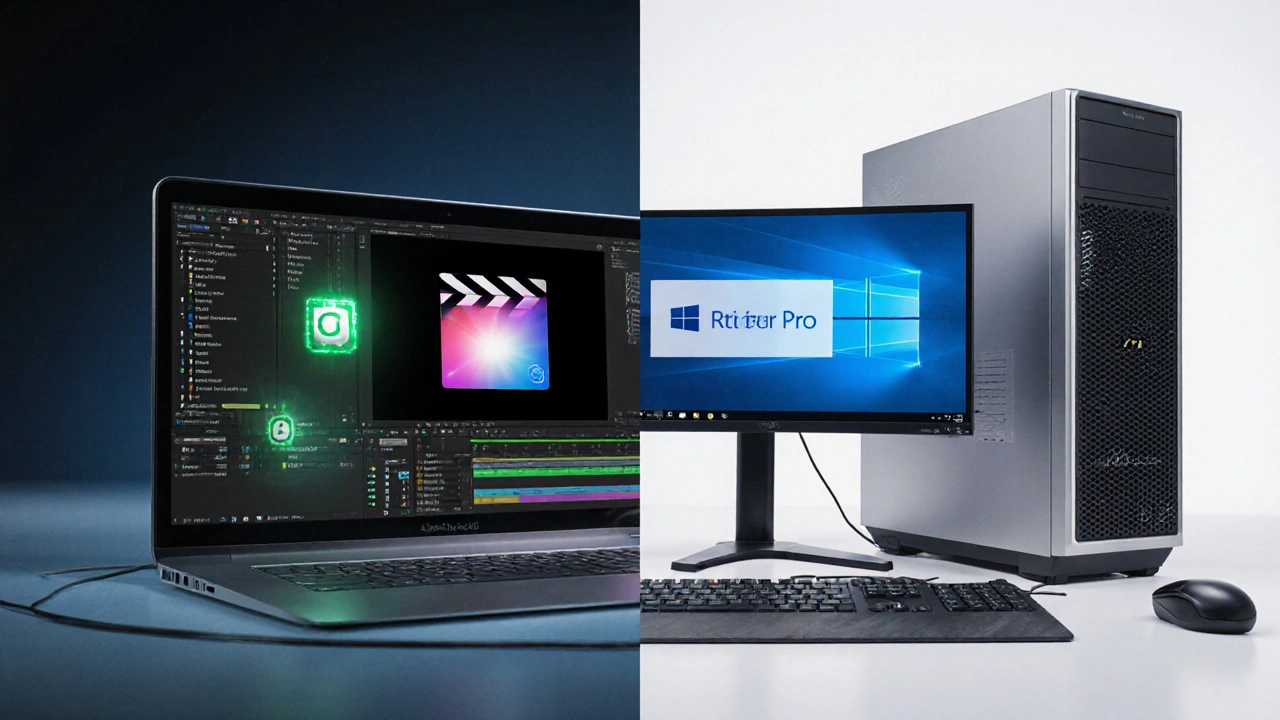
Final Cut Pro vs Premiere Pro Decision Tool
Answer a few questions to determine which video editor best matches your workflow, hardware, and budget.
Choosing the right video editor can feel like a high‑stakes gamble, especially when the two biggest names on the market constantly vie for the top spot. On one side you have Final Cut Pro, Apple’s flagship non‑linear editor built for macOS. On the other, Premiere Pro, Adobe’s cross‑platform powerhouse that lives inside the Creative Cloud suite. Both promise professional‑grade results, but their strengths, quirks, and pricing models differ enough that the "better" choice really depends on your workflow, hardware, and creative goals.
Understanding the Core Platforms
Before diving into features, it helps to know the ecosystems each app belongs to.
- Final Cut Pro runs exclusively on macOS. The software is tightly coupled with Apple’s hardware and system‑level APIs, which lets it tap into the performance benefits of the latest Apple silicon.
- Premiere Pro is a true cross‑platform tool, available on both Windows and macOS. This flexibility is a big draw for studios that maintain mixed‑OS workstations.
Both editors support the major video codecs-H.264, H.265/HEVC, ProRes, DNxHD/HR-but the way they handle hardware acceleration differs, which impacts real‑time playback and render times.
Performance and Hardware Compatibility
When you’re editing 4K or 8K footage, raw performance can make or break your day.
On Mac machines equipped with the Apple M1 or M2 chips, Final Cut Pro often feels snappier. Apple designed the app to use the unified memory architecture and Metal‑based GPU acceleration, delivering faster render times for ProRes and Apple‑optimized codecs. Independent benchmarks from 2024 show a typical 30‑second 4K ProRes clip exporting in roughly 45% less time on an M2‑MacBook Pro compared to Premiere Pro on the same hardware.
Premiere Pro, however, has broadened its GPU support across both AMD and NVIDIA cards on Windows PCs. If you run a workstation with an RTX4090 or a professional Quadro, Premiere leverages CUDA cores for accelerated encoding and effects, often outpacing Final Cut on non‑Apple hardware. The trade‑off is that Premiere’s performance hinges on driver updates and occasional GPU‑related bugs.
Interface and Learning Curve
First impressions matter, especially for freelancers who need to hit the ground running.
- Final Cut Pro sports a magnetic timeline that automatically snaps clips into place. New users love the visual clarity, but seasoned editors sometimes complain about the lack of traditional track‑based editing.
- Premiere Pro sticks with the classic track model, which mirrors the layout of most broadcast and post‑production pipelines. The interface is highly customizable, but the sheer number of panels can overwhelm newcomers.
Both tools provide customizable keyboard shortcuts, but Premiere’s integration with After Effects means you’ll often toggle between two applications for motion graphics, whereas Final Cut pairs nicely with Motion for native effects.
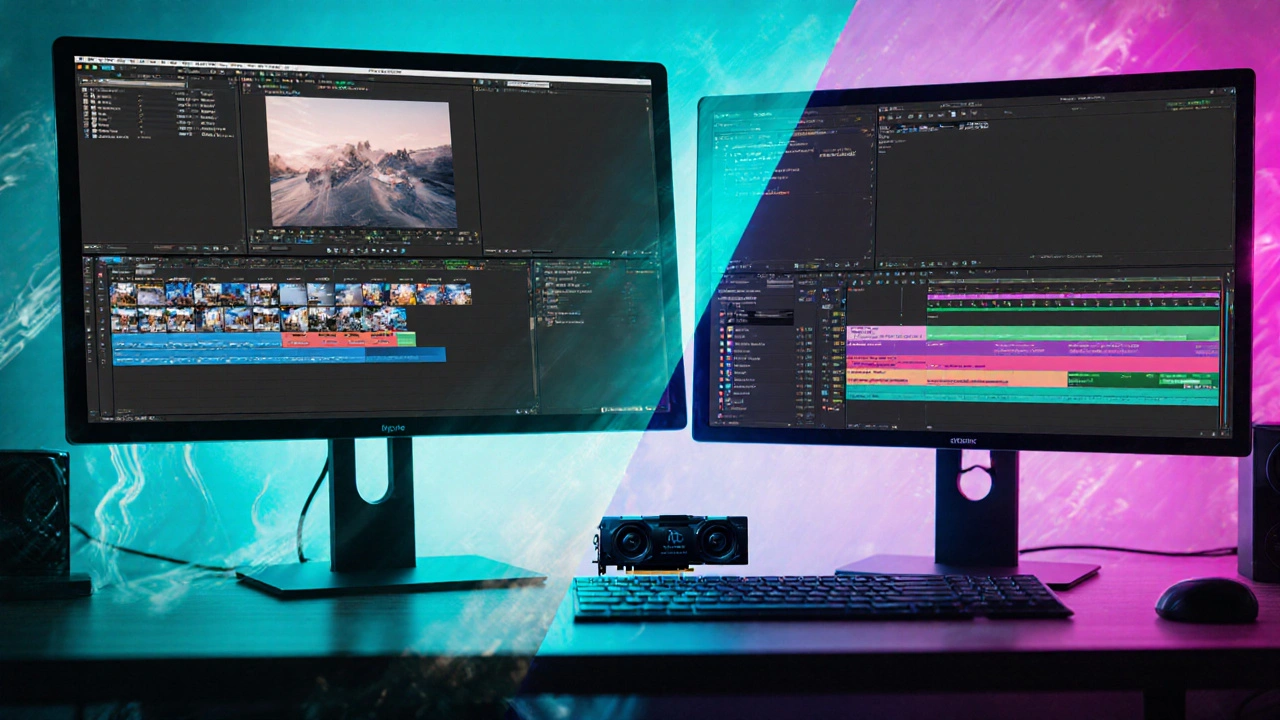
Editing Features and Color Grading
When the edit is locked, you’ll be spending a lot of time refining color, adding effects, and polishing audio.
- Both editors include multi‑camera editing, but Final Cut’s “blade” tool lets you cut and paste clips with fewer clicks, while Premiere offers more granular control over clip properties through the Effect Controls panel.
- In the color department, Premiere ships with the Lumetri Color panel, which supports HDR grading and built‑in LUTs. For many colorists, it’s a solid, all‑in‑one solution.
- Final Cut Pro now features a built‑in color board and third‑party support for DaVinci Resolve LUTs, but many high‑end users still export to DaVinci Resolve for advanced grading.
Audio-wise, Premiere integrates tightly with Adobe Audition, making round‑tripping seamless. Final Cut’s audio tools are solid for basic mixes but lack the depth of Audition.
Workflow Integration and Ecosystem
Professional studios rarely work in isolation. Compatibility with other tools can save hours of export‑import dance.
- Final Cut Pro lives within Apple’s ecosystem. Projects can be handed off to Motion for motion graphics, then to Compressor for batch encoding. The entire chain stays native to macOS, reducing transcoding steps.
- Premiere Pro belongs to the Adobe Creative Cloud. This means instant access to Photoshop for image assets, After Effects for compositing, and Audition for sound design-all with shared libraries and Creative Cloud Libraries for asset management.
- Both apps support proxy workflows, but Premiere’s proxy manager offers more automatic relinking options, especially on Windows.
Pricing and Licensing
Cost is a decisive factor for freelancers, small agencies, and schools.
- Final Cut Pro is sold as a one‑time purchase for $299 (USD). That price includes free updates for the current major version, making budgeting straightforward.
- Premiere Pro is subscription‑only, priced at $20.99 per month as a standalone app or $52.99 per month as part of the full Adobe Creative Cloud suite. While the subscription can be cheaper up‑front, the long‑term expense adds up quickly.
If you already have access to Adobe’s suite via a university license or an agency contract, Premiere becomes effectively free. Conversely, a Mac‑only creative who values a single purchase may lean toward Final Cut.
Best Use Cases - Who Should Choose Which?
Both editors excel, but they shine under different conditions.
| Criterion | Final Cut Pro | Premiere Pro |
|---|---|---|
| Platform | macOS only | macOS & Windows |
| Hardware Optimization | Apple Silicon (M1/M2) native | CUDA/NVIDIA & AMD GPUs |
| Learning Curve | Magnetic timeline - quicker for beginners | Track‑based - steeper but industry‑standard |
| Color Grading | Lumetri‑style board + Resolve export | Lumetri Color panel built‑in |
| Audio Integration | Basic mix, export to Audition if needed | Native Audition round‑trip |
| Creative Cloud Ecosystem | Motion, Compressor - Apple‑centric | Photoshop, After Effects, Audition - seamless |
| Pricing Model | One‑time $299 | Subscription $20.99/mo (standalone) |
In short, if you’re a Mac‑only content creator who values speed and a one‑off cost, Final Cut Pro often feels like the smoother ride. If you need cross‑platform collaboration, deep integration with Photoshop and After Effects, or you already pay for Creative Cloud, Premiere Pro usually edges ahead.
Final Verdict
Neither editor is universally "better"-they solve slightly different problems. The decisive factor boils down to three questions:
- What hardware are you using? (Mac+Apple silicon→Final Cut; Windowsor mixed→Premiere)
- Do you rely on Adobe’s broader suite? (If yes, Premiere fits naturally.)
- How do you prefer to pay? (One‑time purchase vs. subscription.)
Answer those honestly, and you’ll land on the editor that makes your workflow faster, not slower. And remember, the best software is the one you actually use-both apps offer free trials, so give each a test run before committing.
Frequently Asked Questions
Can Final Cut Pro run on Windows via emulation?
No. Final Cut Pro is compiled only for macOS and relies on Apple‑specific APIs, so emulators like Parallels or VMWare can’t provide the necessary performance or hardware acceleration.
Is there a discount for students on Premiere Pro?
Adobe offers a 60% discount on the Creative Cloud All‑Apps plan for eligible students and teachers, bringing the cost down to about $19.99 per month.
Which editor handles proxy workflow better?
Both apps support proxies, but Premiere Pro’s proxy manager automates relinking and works consistently across Windows and macOS. Final Cut’s proxy workflow is solid on Mac, yet it lacks the same level of batch automation.
Do I need to buy Motion separately when I have Final Cut Pro?
Motion is a separate app priced at $49.99, but many Final Cut users consider it a worthwhile add‑on for native motion graphics. It’s not required for basic editing.
Can I export a Premiere Pro project directly to Final Cut Pro?
There’s no one‑click export. You’d need to render a master file (e.g., ProRes) and then import it into Final Cut. Some third‑party tools claim to convert XML timelines, but they’re not perfect.

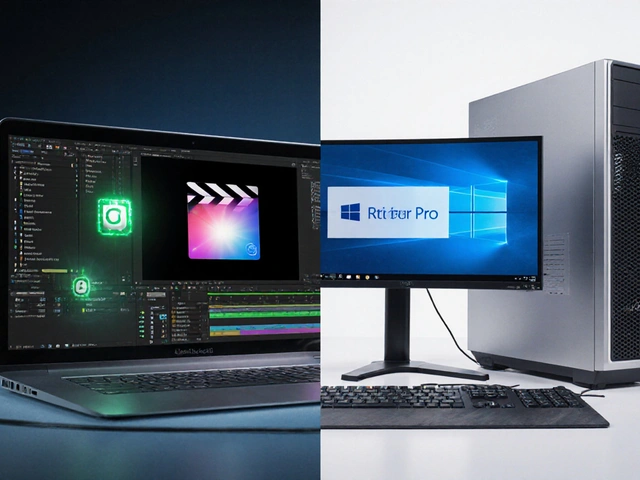
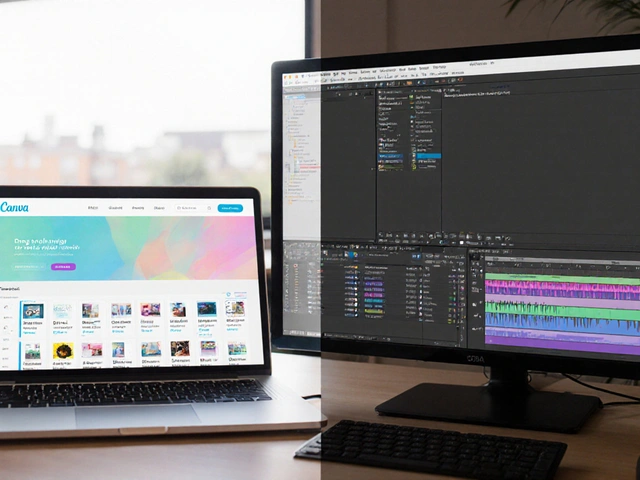

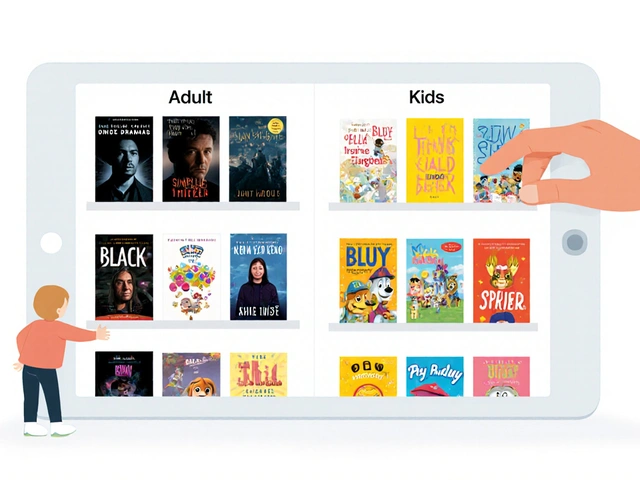

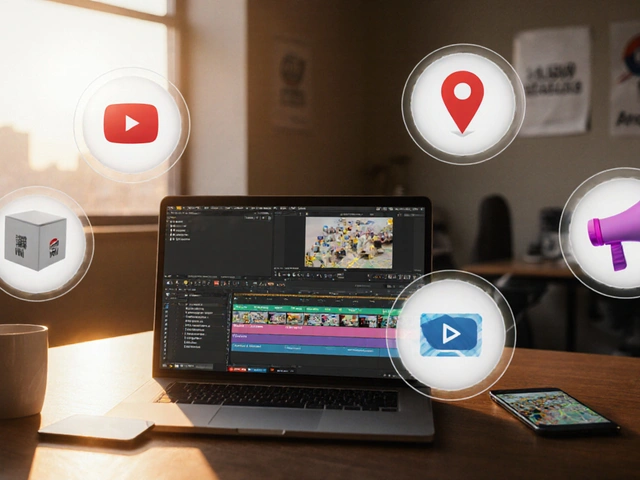
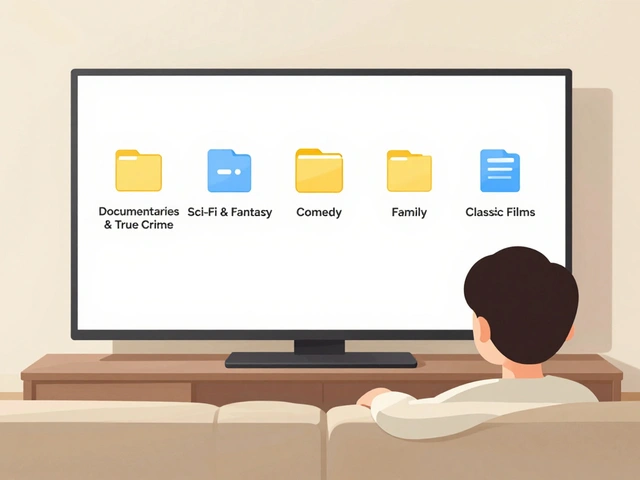




Tiffany Ho
October 7, 2025 AT 21:09I think the article does a good job breaking down the main differences between Final Cut Pro and Premiere Pro. It’s helpful for anyone trying to decide which tool fits their workflow.
michael Melanson
October 8, 2025 AT 16:36The comparison of hardware acceleration really stood out to me. Knowing that Final Cut leverages Apple Silicon while Premiere leans on CUDA and AMD GPUs can guide my future hardware upgrades.
lucia burton
October 9, 2025 AT 12:03When you dive into the nitty‑gritty of video post‑production pipelines, the decision matrix isn’t just about cost or operating system – it’s about the entire ecosystem that surrounds the NLE. For instance, the latency implications of using ProRes‑HQ on an M2‑based Mac versus an H.264 render on an RTX 4090 can translate into hours of saved time on a tight deadline. Moreover, the integration depth with ancillary tools-like DaVinci Resolve for color grading or Audition for audio post‑production-creates a compounding effect on overall throughput. Projects that demand extensive multi‑camera sync, oftentimes seen in live‑event broadcasts, benefit from Premiere’s track‑based timeline, which offers granular control over each angle’s metadata. Conversely, Final Cut’s magnetic timeline, while intuitive for solo creators, can become a bottleneck when you need to manually adjust edit points across dozens of synchronized clips. The article’s section on proxy workflows also deserves emphasis: Premiere’s automatic relinking and batch processing capabilities can reduce the media management overhead dramatically, especially in multi‑client environments where storage constraints are a constant concern. On the flip side, Final Cut’s proxy generation is tightly coupled with Apple’s native transcoding, which yields exceptionally low‑latency playback on M1‑based hardware but lacks the cross‑platform flexibility that remote teams often require. Lastly, licensing models are not merely financial considerations; they affect long‑term budgeting and asset preservation. A one‑time purchase for Final Cut means you can archive your project and revisit it years later without worrying about subscription lapses, while Premiere’s subscription model ensures continuous access to the latest codec updates and AI‑driven features like Auto‑Reframe, albeit at a recurring cost. All these variables-hardware acceleration, workflow integration, proxy handling, and licensing-create a multidimensional decision space that can only be navigated with a clear understanding of one’s specific production pipeline.
Denise Young
October 10, 2025 AT 07:29Honestly, the "magnetic timeline" in Final Cut sounds like a gimmick designed to keep newbies from learning proper editing discipline. If you ever need to do anything beyond basic cuts, you’ll quickly miss the granular control that Premiere’s track‑based UI provides-though I suppose that’s a problem for those who enjoy feeling powerful.
And let’s not overlook the fact that Adobe’s ecosystem is practically a monopoly, forcing you to buy Photoshop and After Effects just to stay productive. It’s a clever way to lock users into a subscription, but if you’re already paying, you might as well get the full suite.
Sam Rittenhouse
October 11, 2025 AT 02:56Reading this made me think of the countless midnight edits I’ve done, juggling audio and video like a dramatist crafting a climax. The way Premiere ties into Audition feels like a stagehand passing props seamlessly, while Final Cut’s native tools are more like a one‑person show-intense, but sometimes you wish for an extra hand.
The emotional weight of choosing the right tool can’t be underestimated; it shapes the rhythm of the entire creative process.
Peter Reynolds
October 11, 2025 AT 22:23I appreciate the balanced view here. It’s useful to see both sides laid out without pushing one over the other.
Fred Edwords
October 12, 2025 AT 17:49From a grammatical standpoint, the article maintains proper syntax, utilizes commas appropriately, and, while presenting technical details, avoids run‑on sentences, thereby ensuring readability across varied audiences.
Sarah McWhirter
October 13, 2025 AT 13:16Wow, did you ever consider that both Apple and Adobe are secretly feeding us data through our video edits? Maybe the real winner here is the algorithm that learns our editing habits. Just a thought.
kelvin kind
October 14, 2025 AT 08:43Nice breakdown.
Ian Cassidy
October 15, 2025 AT 04:09The hardware acceleration points are spot on – it’s all about GPU pipelines whether you’re on a Mac or a Windows rig.
Zach Beggs
October 15, 2025 AT 23:36Good to see the pricing models compared clearly; helps freelancers plan budgets better.
Kenny Stockman
October 16, 2025 AT 19:03I’d add that the community support for Premiere is huge, with tons of tutorials, while Final Cut’s forums are a bit more niche but still helpful.
Tom Mikota
October 17, 2025 AT 14:29While the article is thorough, it could have mentioned that both apps now support HDR workflows, which is increasingly important for modern productions.
Mark Tipton
October 18, 2025 AT 09:56It is imperative to acknowledge, with scholarly rigor, that the dichotomy presented herein may inadvertently obscure the intrinsic complexities of contemporary digital cinematography. The assertion that Final Cut Pro merely "leverages Apple Silicon" neglects the nuanced interplay of Metal API optimizations, which, while advantageous, do not singularly guarantee superior performance across all codec families. Likewise, the claim that Premiere Pro's CUDA reliance equates to universal superiority fails to account for situational bottlenecks arising from driver incompatibilities on certain Linux‑based workstations, a scenario increasingly prevalent in research‑driven post‑production pipelines. Moreover, the perfunctory treatment of subscription economics overlooks the macro‑economic implications of perpetual licensing models, which, when examined through a fiscal‑policy lens, may exert subtle pressures on independent creators' financial autonomy. In sum, while the article offers a commendable overview, a more exhaustive exegesis would benefit from integrating peer‑reviewed benchmarks, longitudinal user studies, and an appraisal of open‑source alternatives that challenge the duopolistic narrative.
Jessica McGirt
October 19, 2025 AT 05:23For those who need a quick start, both Adobe and Apple provide 30‑day free trials; testing both on your current hardware can reveal which interface feels more natural for your editing style.